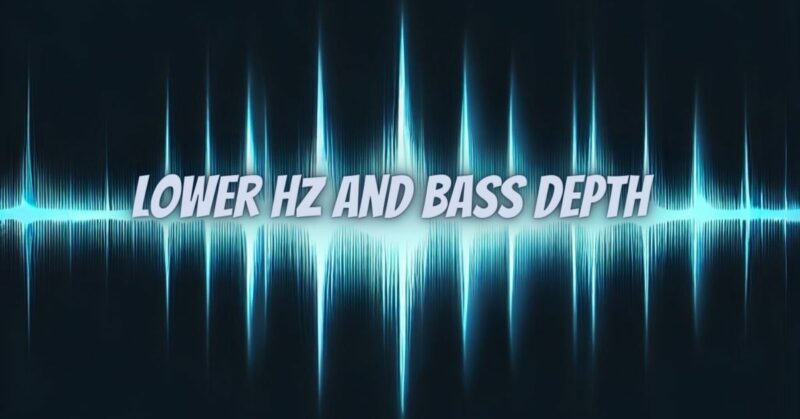Bass frequencies, known for their visceral impact and ability to move both the air and the soul, come in a variety of forms. While we often think of bass as a collective term, it is crucial to differentiate between the lower Hz ranges to truly understand their unique contributions to music and soundscapes. In this article, we will delve into the depths of lower Hz bass frequencies, exploring their significance, applications, and the profound effects they have on our auditory experiences.
Exploring Lower Hz Bass Frequencies
Lower Hz bass frequencies refer to those that fall below the typical audible range of human hearing, which extends from 20Hz to 20,000Hz. Specifically, we’ll examine the sub-bass frequencies below 60Hz and the infrasound frequencies below 20Hz, both of which hold distinct roles in music and audio.
- Sub-Bass Frequencies (20Hz – 60Hz):
- Vibrational Power: Sub-bass frequencies, typically ranging from 20Hz to 60Hz, are characterized by their ability to create powerful vibrations felt as much as heard. These vibrations can shake the floor, rattle windows, and resonate within the body, providing a deeply immersive experience.
- Musical Applications: Sub-bass frequencies are often a defining element in genres such as EDM, dubstep, and hip-hop. They are responsible for those earth-shaking drops and thumping beats that energize dance floors and music festivals.
- Emotional Impact: Sub-bass frequencies evoke a sense of intensity, anticipation, and excitement. They can elevate the emotional impact of a musical composition, immersing listeners in the sonic landscape.
- Infrasound Frequencies (Below 20Hz):
- Subliminal Sensations: Infrasound frequencies, which extend below the audible range (typically below 20Hz), are not consciously heard but are often felt as subtle vibrations or a sense of pressure. They possess an almost mystical quality, eliciting emotional and physiological responses.
- Natural Occurrence: Infrasound is prevalent in nature, generated by sources like earthquakes, volcanoes, and thunderstorms. It is also associated with unexplained sensations in haunted places, adding to its enigmatic allure.
- Artistic and Scientific Exploration: Musicians, sound artists, and researchers have begun to experiment with infrasound’s potential in creating unique, immersive soundscapes. Infrasound can convey a sense of mystery and intrigue, enhancing storytelling in various media.
Production and Playback Considerations
- Specialized Equipment: To reproduce lower Hz bass frequencies accurately, specialized equipment such as high-quality subwoofers and audio systems are essential. These components are designed to handle the immense power and vibrations associated with deep bass.
- Equalization and Mixing: Proper equalization (EQ) and mixing techniques are crucial to balance lower Hz bass frequencies in a mix, ensuring that they enhance the music without overwhelming it.
- Safety and Comfort: When producing or experiencing infrasound, it’s essential to consider safety and comfort. Prolonged exposure to extreme infrasound levels can have adverse effects on health and well-being.
Lower Hz bass frequencies, encompassing sub-bass and infrasound, add a dimension of depth and physicality to the world of music and audio. These frequencies can be both thrilling and mysterious, capable of captivating audiences and shaping emotional responses. As technology and artistic exploration continue to push the boundaries of sound, our understanding of the significance of lower Hz bass frequencies will evolve, reminding us of the endless possibilities for innovation in the realm of auditory experiences.


